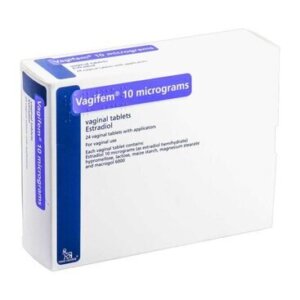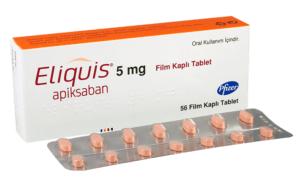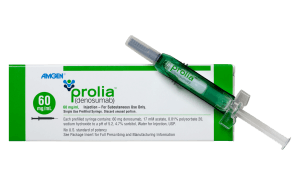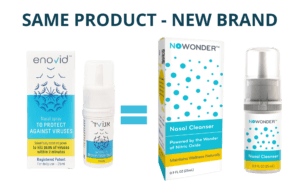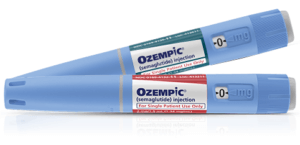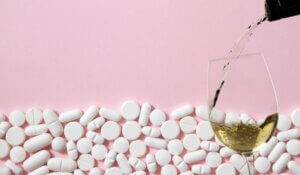
The 2022 United States National Survey on Drug Use and Health found that over 46 million Americans aged only 12 and older dealt with substance use disorders that past year. This includes around ten percent of Americans having Alcohol Use Disorder (AUD) and almost ten percent facing drug use disorders, with nearly three percent of Americans struggling with both alcohol and drug use disorders at the same time.
Mixing drugs and alcohol poses severe dangers, often leading to an alcohol-drug interaction, which could be life-threatening. We’re going to dive into the science of how it all works, hoping that understanding the danger of mixing substances will help us make smarter choices and avoid risky situations.
The Effects of Alcohol
Alcohol is what is known as a central nervous system (CNS) depressant. CNS depressants slow down the brain and nervous system. This means alcohol can affect focus and balance and slow down our ability to respond to unexpected situations. When we have too much of a central nervous system depressant, it can result in impaired decision-making and coordination, vomiting, irregular or shallow breathing, blackouts, memory loss, unconsciousness, coma, and potentially even death.
In the short term, alcohol can lead to hangovers, alcohol poisoning, accidents, conflicts, lowered inhibitions, and risky behaviors. Over the long term, regular alcohol consumption can contribute to over 200 different diseases and injuries. While a person would have to drink a lot in a short space of time for alcohol alone to be fatal, mixing drugs and alcohol, especially central nervous system depressants, can be extremely dangerous, making an alcohol-drug interaction much more likely.
Common Misconceptions About Alcohol 
Myth: Drinking alcohol is a good way to relax and reduce stress.
Fact: Alcohol actually adds stress to the body. Our stress hormone levels go up when we drink. Even though we might feel more relaxed in the short term, our bodies face more stress.
Myth: Eating a greasy or milky mix before drinking can slow down alcohol absorption and prevent drunkenness or sickness.
Fact: The stomach can’t be “coated” to stop alcohol from getting into the body. But it’s better to eat foods with lots of carbs and proteins before drinking. These foods digest slowly and lessen the amount of alcohol that goes directly into the blood from the stomach lining.
Myth: It’s good if I can handle a lot of alcohol.
Fact: If you need more alcohol to feel its effects or your usual amount doesn’t make you feel tipsy, you’re building up a tolerance. This is a sign that your liver is getting too much alcohol, and your body is working overtime to try to handle it.
Myth: If someone drinks too much and passes out, they should sleep it off.
Fact: It’s dangerous to leave someone who’s had too much alcohol alone to sleep. The amount of alcohol needed to make you pass out is close to the amount that can be deadly. If a friend passes out, watch their breathing and heart rate. If you’re worried, get them medical help right away.
For a more comprehensive list of alcohol myths and facts, click here.
The Effects of Drugs
Different drugs have varying effects on the body and mind. There are seven main types: depressants, psychedelics, stimulants, empathogens, opioids, cannabinoids, and dissociatives.
- Central Nervous System (CNS) depressants are types of medicine that help calm the brain. They include drugs like sedatives, tranquilizers, and sleep aids. These medications work by slowing down brain activity, which makes them helpful for managing anxiety, panic attacks, short-term stress, and sleep problems.
- Psychedelics influence all the senses, changing a person’s thoughts, time perception, and emotions, sometimes leading to hallucinations.
- Stimulants speed up messages between the brain and body, making a person feel more awake, alert, and energetic.
- Empathogens enhance feelings of empathy, kindness, and social connection.
- Opioids affect opioid receptors in the brain, slowing heart rate and breathing while providing pleasure and pain relief.
- Cannabinoids, found in cannabis, create various effects like happiness, relaxation, anxiety, or paranoia.
- Dissociatives may make a person feel detached from reality, leading to hallucinations and altered thoughts and emotions.
Depressants are the ones to be the most careful with if you are drinking, as they are most likely to result in an alcohol-drug interaction. Depressants slow down messages between the brain and body, amplifying the effects of alcohol. Some examples of prescription depressants to watch out for are Xanax, Valium, and prescription opiates like OxyContin. Five categories of drugs are classified as central nervous system depressants:
- Alcohol
- Barbiturates
- Benzodiazepines
- Sleeping pills
- Opioids
FAQ: What are some resources for help and support for substance abuse issues?
The Substance Abuse and Mental Health Services Administration provides services to assist with drug and alcohol issues. You can look for a treatment center nearby and get support for substance abuse problems. When searching for a facility, use filters to find different types of care, like inpatient, outpatient, and telehealth options. The Alcohol Treatment Navigator helps to select the right treatment program and offers guidance on supporting yourself or a loved one during recovery.
The Risks of Drugs and Alcohol Combination
Combining alcohol with drugs, both prescription and recreational, can have dangerous effects, leading to dizziness, stumbling, memory loss, and even potential death. For example, stimulants such as Ritalin and Adderall mixed with alcohol can mask the effects of alcohol, making it hard to know how much you’ve had and possibly result in overdrinking and alcohol poisoning.
Prescription opiates like Vicodin and OxyContin combined with alcohol can slow breathing, lower pulse and blood pressure, and even lead to unconsciousness or coma, posing a risk of death. The potential for harm and misuse is just too high, which is why we do not sell controlled drugs on our website.
Real-Life Consequences
When you mix drugs and alcohol, it can cause both physical and emotional harm. A dangerous drug combination can up the risk of overdose, heart problems, and bad decision-making, often leading to tragic results.
Take this, for example: when you mix cocaine and alcohol, you end up with an alcohol-drug interaction that creates something called cocaethylene. It makes the high from cocaine even stronger but also makes the likelihood of a heart attack or stroke much greater. And can impact your brain and liver in the long run. Studies say a cardiac event is much more likely when cocaine and alcohol are mixed versus cocaine use alone.
The long-term impact experienced by people who combine drugs and alcohol can be substantial. Recounts from drug and alcohol abuse survivors speak of prolonged recovery periods and ongoing health complications. They also often talk about the psychological toll, such as anxiety, depression, and even traumatic flashbacks, leading to a need for extensive therapy and support.
Prevention and Safety Measures: Don’t Mix drugs and alcohol
If you are consuming alcohol alone or while on recreational drugs or medication, try these strategies for harm reduction.
- Drink water or non-alcoholic drinks between alcoholic beverages.
- Avoid drinking in rounds with friends to prevent overconsumption.
- Choose smaller servings of beer, cider, or spirits instead of pints or doubles.
- Be cautious when sharing a bottle of wine to monitor your intake.
- Steer clear of high-alcohol drinks like cocktails.
- Eat before and during drinking to slow down alcohol absorption.
- Engage in activities like playing pool or chatting to reduce consumption.
- Don’t leave your drink unattended to prevent drink spiking.
- Avoid sharing drinks and watch your drinks if they are being poured in a public setting like a club or bar.
- Stay vigilant and monitor friends’ drinks to ensure safety.
FAQ: What are the benefits of harm reduction?
Harm reduction programs can prevent deaths, injuries, diseases, and drug problems. They also support people who use drugs by connecting them to education, counseling, and treatment. It also helps lower the risk of diseases like HIV and hepatitis by offering clean supplies, information, and support services. Harm reduction programs aim to reduce stigma, offer hope, and involve people with experience in guiding others toward positive changes.
FAQs
What should I do if I suspect someone is overdosing?
If you suspect someone is overdosing, call 911 immediately. Keep their airway clear by gently tilting the head back and lifting the chin to aid breathing and prevent choking. Assess their breathing and keep an eye on their condition until help arrives.
Are there safe levels of alcohol and drug use?
Not really. The dangers of drinking alcohol have been carefully studied and documented over time. The World Health Organization recently stated that no amount of alcohol is safe for health. As for drugs, the level of danger is based on the potential for abuse. Schedule I drugs have high abuse potential. Schedule II drugs have a high risk of abuse and can lead to severe dependence, and Schedule V drugs have the lowest risk of abuse and are deemed the “safest” but should still not usually be mixed with alcohol.
How can I talk to a loved one about their substance use?
The stigma around addiction often stops people from seeking help. To reduce stigma, use respectful language when talking to your loved one. Be mindful of your words to avoid making them feel ashamed or weak. For instance, instead of labels like “addict” or “junkie,” refer to them as an individual with a substance use disorder. Likewise, replace terms like “drunk” or “alcoholic” with “individual with an alcohol use disorder.” Choose your words thoughtfully to offer support and understanding.






